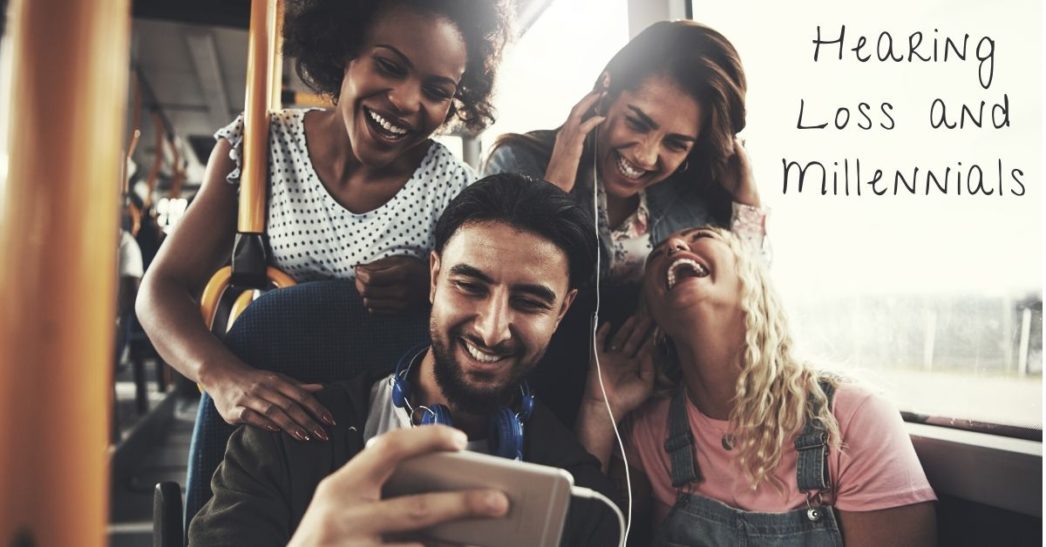American society has been a loud one for a long time. We recognize the effects of loud sound in the workplace and set up regulations to enforce safety on the job, but there is no protection against a loud daily life. Trucks whizzing by, appliances, lawnmowers, rock concerts, movies, home entertainment systems, and the ubiquitous iPods and iPhones that we use to bring music with us everywhere, all take their toll on the human ear. The iPod came on the market in 2003, and it is the loudest personal music-listening device that has ever existed. Yes, it is louder than the Walkman was.
And yes, millennials are starting to feel the effects of hearing loss. Not only the iPod, one of the devices that defined their generation, but the increased prevalence of loud music festivals, increased air travel, and myriad other activities have taken their toll. Hopefully, now that older millennials are beginning to seek treatment for hearing loss, future generations will take more seriously the damage that can be done.
Right now, as many as 17% of teenagers, age 12 to 19, have measurable hearing loss in one or both ears. Hearing loss does not get better: it gets worse. It’s important for younger people to start protecting their ears more. Why don’t they do it?
Lack of Awareness of Unsafe Listening Levels
Many people simply aren’t aware that hearing loss can result at relatively low listening volumes, especially when the transducer (speaker) is so close to the eardrum. We think a sound needs to be painful to cause hearing loss. Not true! In fact, sounds as low as 85 dBA (decibels A-weighted, a unit of measuring sound levels in the air) can cause hearing loss after about eight hours of exposure. For every additional 3 dBA, the duration required for hearing loss to occur is cut in half. Many commercially available headphones reach a maximum volume of 100 dBA. At that level, it only takes 15 minutes to cause hearing loss. If you’re listening like that on your way to and from work or school every day, you’re doing serious damage in a short amount of time.
What’s more, we are often turning our headphones up to high levels in order to mask an already noisy environment. Walking down a busy street or riding a commuter train already puts us on the verge of dangerous sound levels, and now we are adding to it with additional, louder sound.
Advances in Medical Technology
It’s true that hearing aids have gotten much smaller and more effective, utilizing DSP (digital signal processing) in order to improve their effectiveness and reduce the amount of necessary user adjustment from environment to environment. We’ve also seen the development of the cochlear implant, a device that can bypass the ear and provide electrical representations of sound directly to the auditory nerve– effectively a cure for certain types of deafness (though the sound they produce is nowhere near the quality of normal hearing).
Many younger people are so confident that a cure for hearing loss is on the horizon that they feel okay about being careless with their hearing. Unfortunately, it is not evident that a full-fledged cure – something that can return hearing ability to normal – will be arriving anytime soon. They might take a cue from past generations who operated on the same assumption, and who now wear hearing aids.
What Can Be Done?
There’s an easy remedy for accruing hearing loss. Besides limiting the volume of our listening devices, we can carry earplugs and use them when we find ourselves in a noisy environment. It may take a minute to get into the habit, but carrying a set of earplugs in your purse, pocket, or on your keyring (in a protective case of course) will save you a lot of pain and heartache down the road. Earplugs are available in a variety of types and price points. No matter what level of noises you encounter on a regular basis, you’ll find a set of earplugs appropriate to that use.
If you’re unsure whether an environment presents unsafe noise levels, remember that about 80 dBA is the maximum safe sound level, and that’s about the volume of your alarm clock. You might wish to download an app to your phone that reads the SPL (sound pressure level) of a space to confirm whether the sound level is safe or not.


